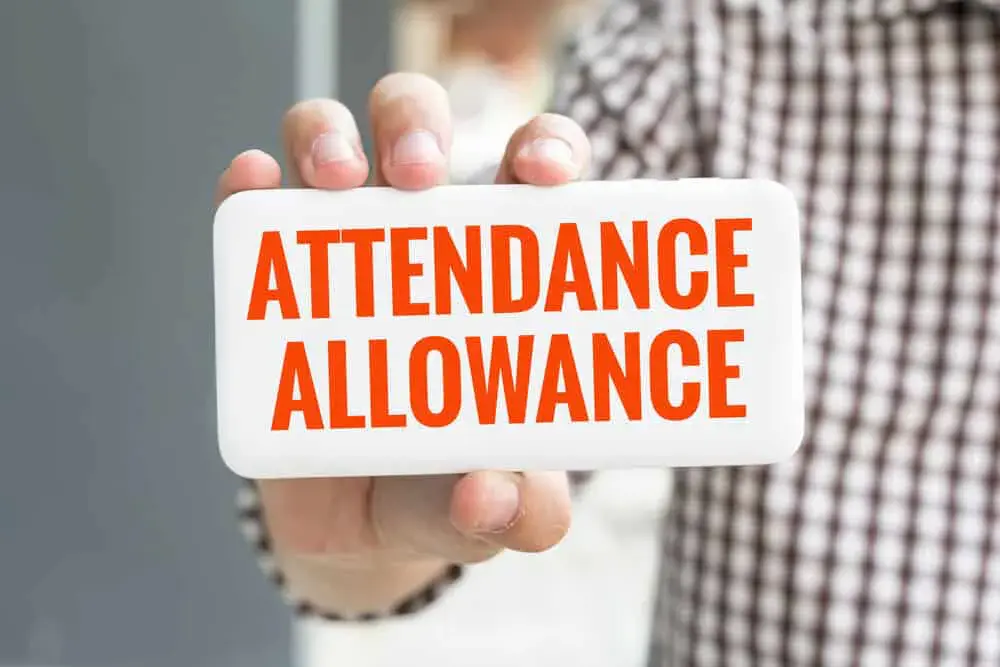Attendance Allowance Pitfalls | Things to Know and What to Avoid

Estimated Reading Time: 8 minutes
This article was reviewed by Sara Chapin, Director of Finance at Lottie, on 16th December 2024, to ensure accurate and trustworthy information for care seekers. Sara Chapin has been a Certified Public Accountant with the National Association of State Boards of Accountancy since 2017. Next review due December 2025.
A large number of Attendance Allowance claims are rejected. Claimants unintentionally withholding information is the main reason for the low success rate.
Applications are often rejected when claimants don’t put down specific symptoms and are unclear when talking about the effect a disability or illness has on their day-to-day life.
Here, we’ve covered the most common reasons for applications being rejected, along with Attendance Allowance pitfalls and mistakes for claimants to avoid. We’ve also provided guidance with filling in the form for Attendance Allowance.
Kickstart your care search
Discover the best care homes in your area through Lottie.
Attendance allowance pitfalls to be aware of:
- Withholding information
- Exaggerating or understating your needs
- Not reapplying if your circumstances have changed
- Not applying based on your financial situation
- Not applying because you have a carer
Know Whether You’re Eligible For Attendance Allowance
Attendance Allowance is a pensioner benefit for people beyond the State Pension age. It’s aimed at people who require additional care and support.
There are two different Attendance Allowance rates: It pays £73.90 a week at the lower rate and £110.40 a week at the higher rate for 2025/26.
To be eligible for Attendance Allowance, you need to meet the following eligibility criteria:
- You must have reached the State Pension age (currently 66 and higher for men and women in the UK)
- You require help to look after yourself. This could be due to a physical or mental disability, or because of an illness
- You need to have had this illness or disability for at least six months (unless you might have six months or less to live)
- You must have been in Great Britain for at least two of the last three years
It isn’t a means-tested benefit, meaning your income and savings don’t affect your eligibility either way (such as when you undergo a financial assessment for care fees).
You can claim Attendance Allowance in a care home if you’re a self-funder. If the local authority pays, you’ll receive it for the first 28 days spent in a care home only.

How it Works With Other Benefits
If you already claim Personal Independence Payments (PIP) or Disability Living Allowance, you won’t be able to claim Attendance Allowance.
With that said, some benefits or tax credits could go up when you start claiming Attendance Allowance.
If you get in touch with your benefits office and tell them you’ve started receiving Attendance Allowance, they’ll be able to let you know what this will do to the other benefits you receive, as well as what else you’re entitled to - including care home benefits.
For detailed information about how to claim, how long the form will take to complete and whether your application has been successful or not, download our Attendance Allowance guide and checklist, written by our Lead Care Expert Hannah Karim.
Why Are Applicants Rejected?
It’s estimated that around 60% of Attendance Allowance applications are rejected. Applicants are most commonly rejected for Attendance Allowance due to:
- Not stating the specific issues or symptoms that affect them
- Not being clear enough with how significant their condition is, or the effect it has on their day-to-day life
- The complicated application form means mistakes are often made, and relevant information isn't included
- You need to have required support for at least six months before applying, which stops many people from being approved
Many people don't know that they can claim Attendance Allowance either. Our 2024 Care Seeker Survey found that 20% of people are unaware of any benefits available to them.
We’re here to help you find the right care home for you or your loved one. You can request a free list of care homes from our Care Experts, who will then share homes matching your budget, location and type of care needed. You can also search for care through our easy-to-use directory.
Attendance Allowance Pitfalls and Mistakes to Avoid
Below, we’ve gone over the most common mistakes and pitfalls that crop up where Attendance Allowance and applying for it are concerned. Often, people are unaware of exactly what information they should and shouldn’t include in their application, as well as when they can and can’t apply.
Withholding information
When it comes to claiming Attendance Allowance, you must be accurate and specific as to why you or your loved one require it.
The things you may wish to include are:
- Your medical condition
- Whether you’ve had any accidents or falls (and the effect of these)
- What activities do you find tough when completely unaided?
- How often support is required to successfully complete these activities
- Does your disability or health condition make particular tasks difficult while still remaining safe?
- Do you receive personal care or supervision during the day?
- Do you need the above support to stay independent at home?
Remember, the more specific information you provide when applying, the more likely your application will be approved.
Exaggerating or understating your needs
Not being truthful about the exact nature of your needs will likely work against you when a decision is made about your eligibility. The same applies to many other similar benefits, including carer benefits.
Not reapplying if your circumstances have changed
Attendance Allowance claims are usually reviewed every 12 or so months to recheck for eligibility. This means if your or your loved one’s initial application was rejected, you can always apply again. This is particularly true if your circumstances have changed since you originally applied.
You can contact the Department for Work and Pensions to discuss these changes if you feel they may lead to your application being approved.
Not applying based on your financial situation
Attendance Allowance isn’t means-tested and doesn’t require a financial assessment. So, you’ll be eligible, regardless of how high or low your income is. Similarly, it isn’t affected by your savings, or whereabouts in the UK you or your loved one live. You also don’t pay council tax on it.
Not applying because you have a carer
Many people don’t realise you’re eligible to apply for Attendance Allowance, regardless of whether or not you have a carer.
Similarly, people living in care homes are still eligible, as long as the local council or authority partially or fully funds their care.
To make applying easier and to learn the information you'll need to provide, download our Attendance Allowance checklist and guide, written by our Lead Care Expert Hannah Karim.
How To Fill in an Attendance Allowance Application
This is the information you’ll need when filling in the Attendance Allowance claim form:
- The details of your GP (you might also need appointment letters or a diagnosis from your GP or another healthcare professional)
- National Insurance number
- A list of any prescriptions or medications you receive
- A hospital number (if relevant) and details surrounding any hospital stays you’ve had
You might also need to provide:
- A care plan created by your local council
- Reports from an occupational therapist explaining the equipment and home adaptations needed for you to continue living there safely
You can apply by filling in the Attendance Allowance Claim form. This link also includes notes on how to fill in the claim form.
Alternatively, you can contact the Attendance Allowance helpline and ask them for a pack, or for advice with filling it out.
Once done, send the completed form to:
Freepost DWP Attendance Allowance
When it comes to the Statement section at the end of the form, we’d recommend getting a third party - such as a family member or your GP - to put something in here. Having them do this will help to provide further validation of your needs and give crucial information where needed.
Remember, if your care needs change, you can always contact the Department for Work and Pensions to resubmit your application with new information.
When filling out an application, be sure to keep the points we’ve gone over in mind, as these are the most common Attendance Allowance mistakes and pitfalls people make.
Lottie matches care seekers with the best care homes for their needs. You can request a free care home shortlist from our Care Experts, who will share homes matching your budget, location and type of care needed. You can also search for care through our easy-to-use directory.
Frequently Asked Questions
What medical conditions qualify for Attendance Allowance?
Almost any type of disability or illness can make you eligible for Attendance Allowance. To qualify, a medical condition must cause you to have care needs on a day-to-day basis which you need support or help with. This could include a sight or hearing impairment, or a condition rooted in mental health such as dementia.
How often does Attendance Allowance get reviewed?
Attendance Allowance can last a minimum of six months and will usually be reviewed annually. This review will recheck your or your loved one’s eligibility. Most government benefits are reviewed every 12 months.
Free Care Fees & Funding Email Course
Written by our team of experts and designed to help families fund later life care in England.



